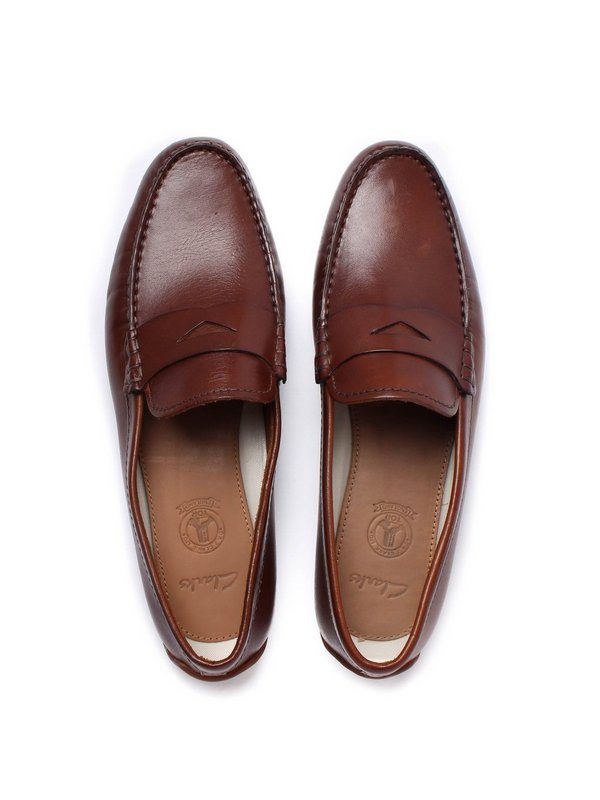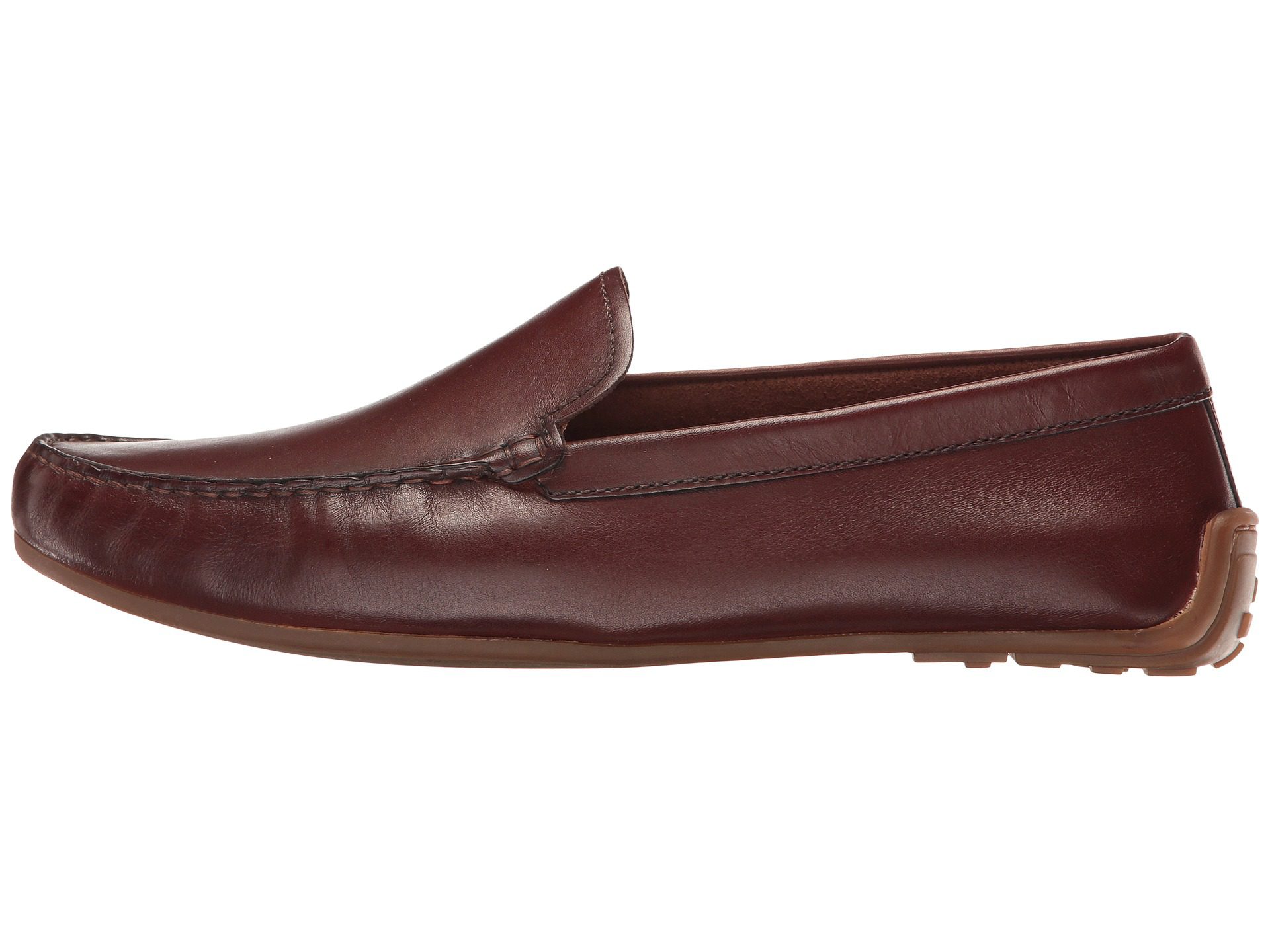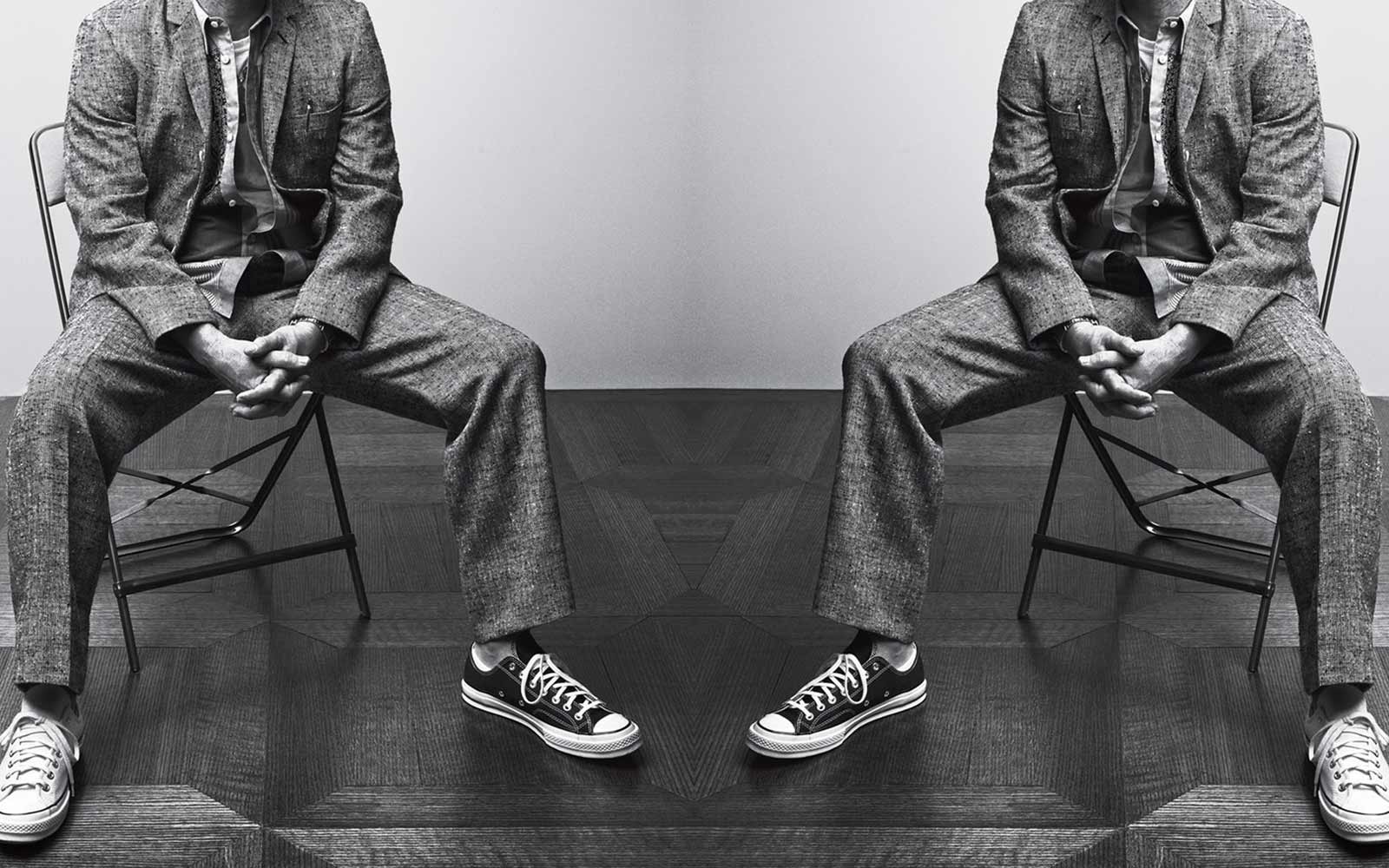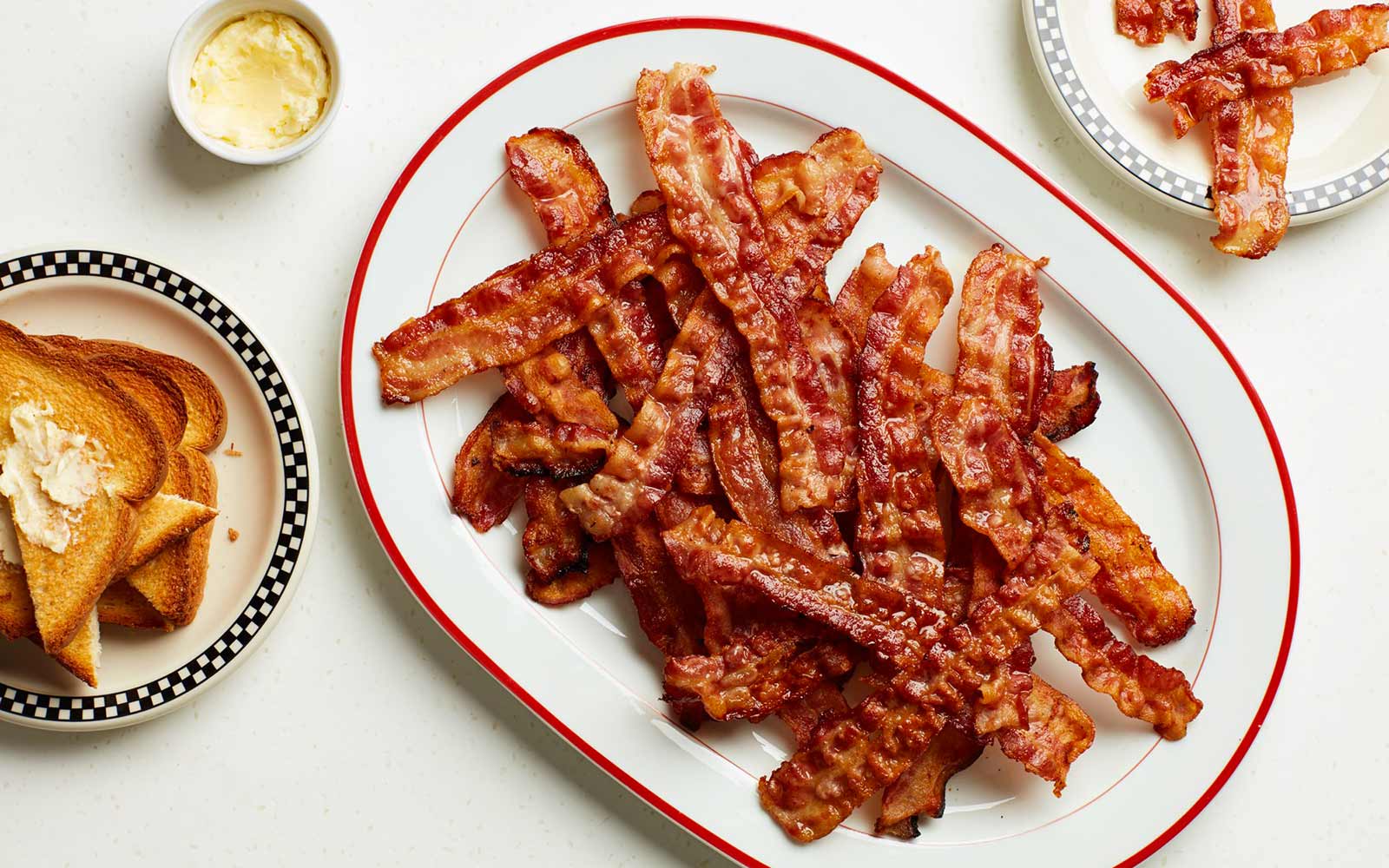Like many of the things a man may do by himself, driving alone cross-country might be a matter of necessity or a matter of choice. If circumstances are compelling you to go solo, we hope you’re up for it. If it’s an item you’re ticking off the bucket-list, remember that fortune favors the bold but punishes the unprepared.
This article deals mainly with practical considerations rather than existential ones, but I’d be remiss if I didn’t offer a short word about the long drive down the proverbial road less traveled. With a road-trip on the horizon, some men’s thoughts will turn immediately to possible play-lists, and to the titles of audiobooks. So much time. I hope none would think So much time to kill – one of the most repellent and tragic phrases ever assembled – and that all men will instead think of how best to use that time. I’ll assume the question is about better and worse, more and less constructive ways to put time to use, and not how to murder it efficiently.
“Solitude,” said Nietzsche, “makes us tougher towards our selves and tenderer towards others. In both ways it improves our character.” To fill your cabin with the sound of voices other than your own is to squander a valuable and perhaps a rare opportunity to think — to really think. Lose yourself in a bespoke soundtrack, or an audio novel, you may. You will thereby avoid the challenge of creating harmony out of the fragments of your own narrative, fragments which you will find (which will, in fact, find you) in the solitude of the long drive alone. The advice that follows is intended to help you get safely to your proximate destination. Let me suggest that the thoughtful use of your drive-time may benefit your journey, in the expansive or philosophical sense of “journey.”
Table of Contents
Preparation & Packing
Be certain your vehicle can handle the drive. This is essential, and we trust it is so obvious as not to require emphasis. Submit your vehicle to a comprehensive inspection, and let the garage or your mechanic know you are intending to drive upwards of 2000 miles. If something needs fixing, fix it. Consider changing all four tires. If you don’t have AAA, get it.

There’s a time and place for adventure, and the prospect of pushing a beloved beater to its limits has its charms. If you have the requisite time, cash, courage, and know-how to tweak and tune en route, then bon chance with your jalopy. Generally speaking though, a mission-critical long-haul journey is not the time to play it by ear with a dodgy radiator, iffy brakes, or mysterious drip. Amazing as it is, Gorilla Tape won’t hold together your drive shaft. Investments in repairs before your departure buy you a greater degree of safety and peace of mind.
Never compromise your safety or that of others.
If your trip is part of a relocation, and/or you’re planning on carrying a lot of items, do not overload your trunk. Place the heaviest objects (or largest quantity of items) on the rear seat, and/or on the floor over the rear axle. Once you’ve loaded everything, eyeball your vehicle’s suspension, then take a drive — a drive of seven to ten miles. If you feel like you’re riding low, or that handling is conspicuously clumsy, offload some of the cargo. Safer to ship goods to your final destination than to overburden your vehicle.
When packing goods, I recommend packing a larger number of smaller, soft-sided bags rather than a smaller number of large, heavy cases or boxes. This is a tough call, and there are pros and cons to both arrangements. More bags means more loading and off-loading — more things to carry, more trips into the building, etc. In the event you need to transfer to another vehicle, however, it is easier to load and to arrange smaller soft-sided bags. You know the dimensions of your vehicle, but it is highly unlikely the tow truck or rental will be able to accommodate your stuff in the same exact way you loaded things. Smaller, soft-side bags are more forgiving.
Test-drive your vehicle once it is loaded.
Finally, a word about cruise-control. If you’ve never used it or have never used it for extended periods of time, then your first long-distance drive is not when you should be experimenting with it. If you are going to get acquainted with cruise control on your trip, try it out only when traffic is light and roadways are clear and dry.
What to Wear
Comfortable clothing is important, but you should aim for something between casual and rugged and should avoid anything either too stylish or too ratty.

For long-haul drives, I wear a light-weight photojournalist vest. Not all guys are fans either of these sorts of vests, or of the quasi-tactical “utility” look. I’m not. But lightweight vests are great for keeping your driver’s license/ID, toll booth tickets, fuel receipts, and small bills close by and easy to get at while you’re behind the wheel and strapped-in. Worn over a long-sleeve henley, you’ll be comfortable and important items will be safe. Vests of this sort do not compromise upper-body mobility.

You’ll be fueling-up, relieving yourself, and resting at truck-stops and filling stations along or just off major motorways. These places are oases for travelers, and therefore are hunting-grounds for opportunistic ne’er-do-wells. Your out-of-state plates and your condition of slight dishevelment announce that you’re far from home, are probably carrying a wad of cash, and are likely less than frosty. If you’re dressed as a man who knows how to handle himself in terra incognita, you’re less likely to attract an abundance of unwanted attention. Dress like a smug, pampered frat boy or an aloof yuppie, and predatory types will treat you as one.
Look decent, but don’t look like you’re a pushover.
Those out-of-state tags on your vehicle are going to catch the attention of law enforcement, too. When handing Five-O your license, registration, and possibly proof of insurance (which you should keep in the breast pocket of your vest), you want to look like the nice intelligent man you are — bloodshot eyes and javabreath notwithstanding. Since it’s more likely the average state trooper speaks Eagle Claw rather than houndstooth, it doesn’t hurt if your look is more Bass Pro Shops than Brooks Brothers. Bottom-line: don’t look either too gentrified or too bad-ass. Far from home and out on the tar plains, Dickies is a better aesthetic than D&G.

As for footwear, I advise against flip-flops, any kind of sandal, or boots. Sandals can slip-off and/or get themselves lodged under the accelerator or fouled in a clutch or other pedal, while boots (and anything that goes above the ankle) can contribute to fatigue far more than you’d imagine.

Light- or mid-weight boots recommend themselves if you are actuating an accelerator that requires a bit of oomph, as will be the case with older Land Rovers, some SUVs and pickups, and Jeeps. If this is the case, try something from Palladium, currently my favorite manufacturer of lightweight boots. On my most recent long-haul trip (from Bristol County, MA to Orange County, CA) I opted to spare the backs of my Mephisto Edlef’s and wore a pair of Clarks Reazors. None knows your feet better than you do, but after years of driving in boots exclusively I’ve settled on driving-shoes. Not only are slip-ons are comfortable, they are convenient at stretch-breaks and nap-time.
Cockpit Carryall
Your empty passenger seat is where you’ll keep whatever it is you’ll want close at hand. A tidy, organized cockpit is a safe cockpit. I now set an open-top tool tote like this one on the passenger seat, and in it keep all drive-time essentials: spare charging cables and power-banks; flashlight; pen and pocket notebook; cigarettes and lighters; a few extra-long straws (for the tall zero-carb Monster energy drinks I consume in excessive quantity); and my Gerber Multi-Tool.

Rifling around in a bag is dangerous. If you foresee handling it, keep it to hand.
On previous trips I used a bungee cord to secure the tote to the seat, to prevent it from slipping onto the floor or tipping over when braking. If you have ever experienced your gym bag or attache case sliding from the passenger seat and onto the floor when braking or cornering, you may wish to secure your tote. The objective is to eliminate the need to have your right hand off of the steering wheel or eyes off the road for any longer than is absolutely necessary. Another advantage of keeping your drive-time essentials organized in a tool tote is this: when you need to duck into a service station or washroom, it is easy to toss your caddy in the trunk where it will be locked-up and out of sight.
How to Eat
If you are taking your time and hitting scenic-spots and attractions, then hopefully you are also making a conscientious effort to sample local and regional dishes along the way. If your goal is to make good-time, though, we recommend eating light, simple fare. Proper sit-down meals and experiential destination-dining will dig into drive-time; but more than that, hearty meals need to be digested and processed. Depending on what you’ve eaten, that final stage of “processing” might arrive at an inconvenient moment.
Even if making good time is indeed the primary objective, I do advise against eating anything while driving. Munching at the helm is distracting. It can lead to divided-attention and soiled clothing, and it invariably contributes to needless vehicle clutter. Plan to eat during short stretch-breaks and fill-ups. Eat enough to keep yourself fueled-up, but not filled-up: protein bars and bottled protein drinks, water, and the occasional orange juice. Three or four days of Spartan caloric consumption might do you good. Less is more. Keep blood-sugar levels in a happy place, and remember: when you’re traveling, voiding liquid waste is more convenient than voiding solid waste.
Do not eat while driving.
Regarding caffeine, do not exceed by more than a little the amount of coffee or energy drink you regularly consume. Man cannot live on FiveHourEnergy and PallMall’s alone. It doesn’t work. It doesn’t make for a cool story. Don’t try it.
How to Rest
Allowing for fuel-ups and pee-breaks, I can drive safely and happily for eight to ten hours straight. Twelve hours behind the wheel is my comfortable maximum; fourteen, my limit. Know what your limits are, and – if you’re new to this – don’t push it. I recommend having three to four hours of solid sleep in the lot of a full-service station like Love’s, rather than random or intermittent power-naps at rest areas along the motorway. Park in a well-lighted place. If it’s too bright for your sleepy peepers, tie a bandana or scarf around your eyes. If you have not yet cultivated good OPSEC (operational security) and SA (situational-awareness) habits, your trip will be a trial-by-fire.
How To Deal With Law Enforcement

One reason not to dress like a vagabond, drug baron, or tarmac pirate is that driving cross-country increases dramatically the likelihood that you will at some point be stopped by an officious, curious, or bored LEO. Be courteous. Law enforcement is only doing what the taxpayers pay them to do. You can minimize friction and hasten an amicable inquiry by doing the following:
- Anticipate what you might need to show law enforcement, and have it handy — perhaps in that open-top tool tote or photojournalist vest. Opening center consoles and glove-boxes put LEOs on edge. Keep a cool hand, Luke, and eliminate that extra bit of tension by ensuring in advance that you do not need to reach into a compartment, bag, or box. Have your license and registration within easy reach at all times — you should be able to have these in hand within seconds of shutting-off your engine. Remember that some states will require motorists to produce immediately upon request proof of insurance. Have it close just in case.
- It helps keep proceedings at a nice, cool temperature if you remove your sunglasses and/or cap (if wearing these), and keep your hands on the steering wheel, where they’re in plain sight to PD. Be courteous.
- Before starting-out, consider removing from your vehicle any bumper sticker or decal that might be needlessly provocative. Yes: You have the constitutional right to express yourself. Just be mindful of two things. First, an edgy meme, sociopolitical message, identity-politics identifier, or even team logo can work against you in some communities and some contexts. Second, no vehicle ever looked better for having decals on it anyway. Let your comprehensive preparations for your journey include debriding your vehicle of whatever nonsense you’ve glued to it.
Tips for Successful Trips
- Make sure you have an old-fashioned but up-to-date road atlas. Yes, we all use some form of GPS these days, and GoogleMaps is wonderful. But it’s better to have a road atlas and not need it than to need it and not have it.
- For a bit less than $100 bucks you can pick-up a smartphone and BoostMobile unlimited data plan charging-card. We recommend using this as your default navigation system. Why? First, it eliminates toggling between your maps, communication apps (social-media, phone, email), your camera, etc. Not only is this safer for you, but it helps with power-management. You will always want to have a sufficiently-charged phone for emergency calls and for keeping in touch with loved-ones. You can better ensure you’ll have a charged, functioning phone if you’re not overtaxing your personal smartphone by running it as your drive-time GPS and intel hub. Even if your vehicle has a state-of-the-art navigation system, having a back-up is a good idea.
- Rest when you need rest, and during breaks take a walk. Stretching is important, for sure; but not only does walking help with circulation, it can keep the hips and lower-back from knotting-up. A few steps into the washroom isn’t enough. If there’s a safe place to do so, walk for a solid fifteen minutes or more. Your body will thank you once you’re back on the road.
- If you encounter rough weather, consider getting off the road. Take seriously severe-weather advisories, especially for things like tornados. If you’re on the motorway and are on a collision course with a funnel cloud, take shelter under an overpass. If visibility is compromised to the point that you cannot see clearly, make sure your defoggers are on and functioning. If you still can’t see, stop as soon as it is safe to do so. Park, assess, evaluate, and if necessary wait until conditions improve.
Ellis Perry has done a lot of long-haul driving, including the following: Zagreb, Croatia to Paris, France (860+ miles) in an armored Chevy Suburban; Gibraltar to Zagreb (1600+ miles) in a Toyota Landcruiser; Stuttgart, Germany to Gibraltar (1400+ miles) in an armored Land Rover Defender; Phoenix, AZ to Fort Phoenix, MA (2600+ miles) in a Jeep Wrangler. Shorter solo runs include Paris to Lamballe (430 miles) in a Toyota Landcruiser, and Perth, Scotland to Southampton, England (478 miles) in a Mercedes G-Wagen. His most recent solo trip was from Fairhaven, MA to Long Beach, CA (3000+ miles), which he completed in four days.
- Affordable Fall Footwear Six suede boots for under $150 - September 7, 2017
- Clip-On vs. Button-Hole Suspenders Is it okay to wear clip-on suspenders? - August 25, 2017
- What You Really Need to Take to University Essentials for campus (and for life) - August 21, 2017







